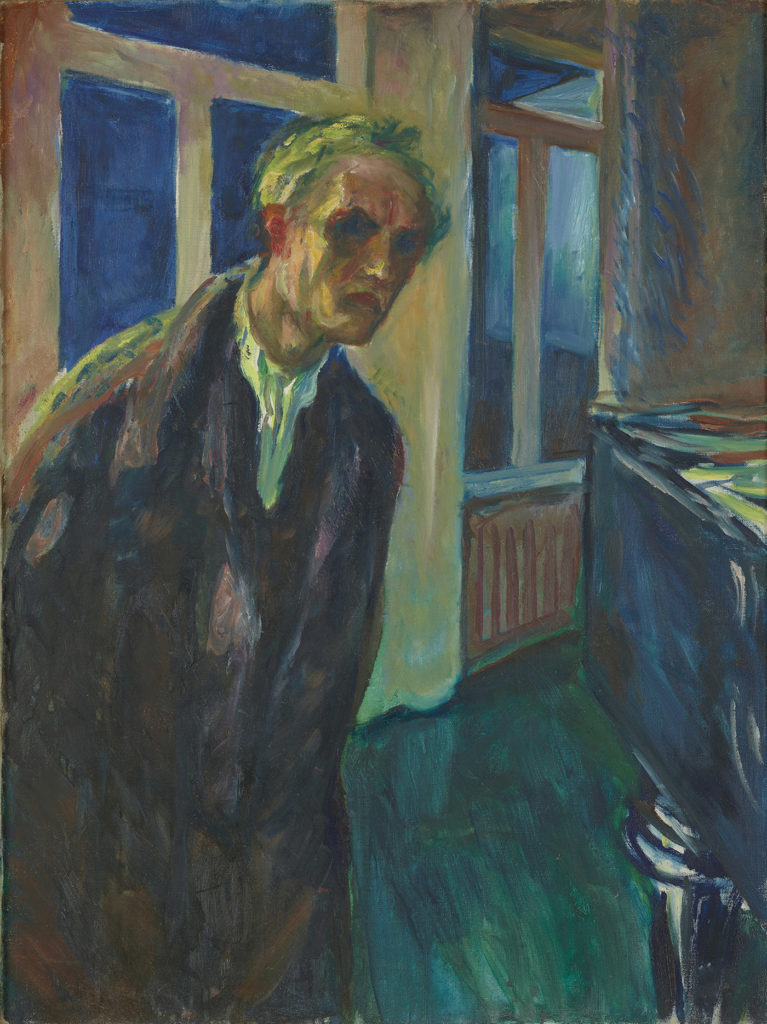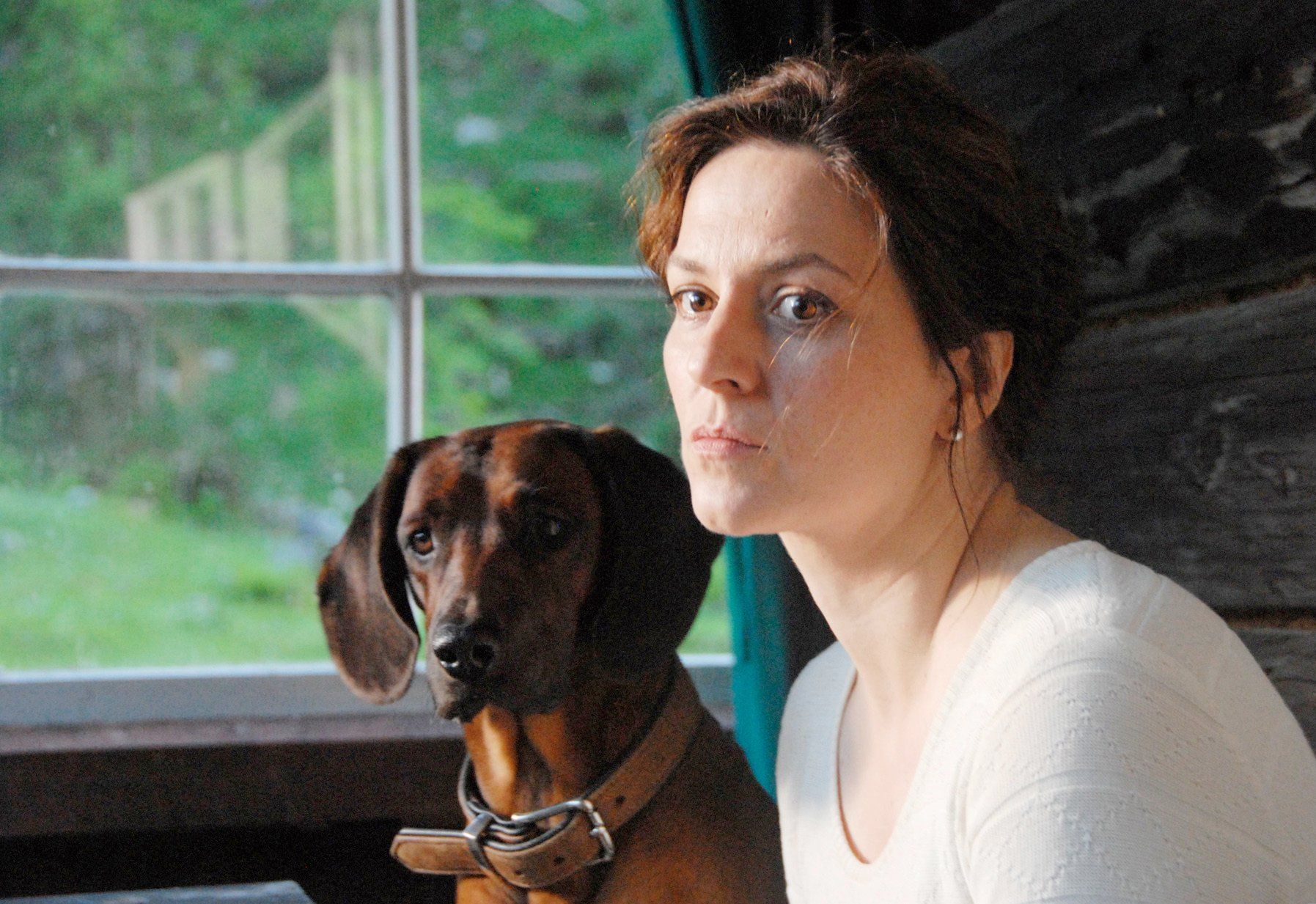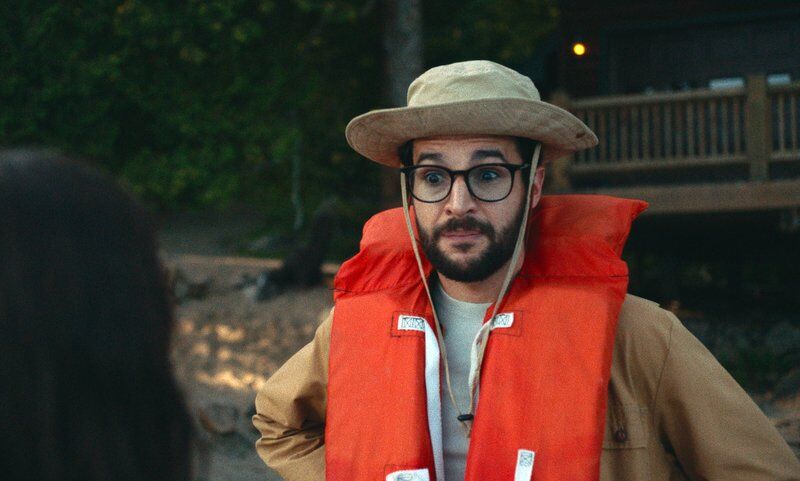First and foremost – check your expectations at the door. Why? Because this movie is literally about nothing. But if you can groove with that sort of investigation… into nothing… then maybe this will be the best movie you have ever seen? But, I do not want you showing up at my house, mid-quarantine, to complain that nothing happens in this film. Why? BECAUSE I JUST TOLD YOU THAT NOTHING HAPPENS! And no, I am not being hyperbolic here. I’m not exaggerating to pique your interest. Nah, this film can’t be about nothing. There has to be something going on – I’m gonna watch it! hahaha. No. Please don’t do that. And yet, even with nothing going on, there is a lot here to discuss. So let’s do this – German Film Die Wand Investigated and Explained. Oh, and I’m not re-reviewing the other movie entitled The Wall (which had A LOT of things happening in it. So if you are looking for a movie entitled The Wall, but were hoping for a plot, narrative, and you know, normal movie goings on…that other Wall might be more your thing.)
If you are intrigued about a movie that has nothing going on in it – then you should pass on the trailer. I mean, the one thing that does happen in the movie is actually front and center in this trailer. So you might want to give it a pass. Just saying.
Die Wand / The Wall Walkthrough
Normally when I watch movies, I keep a glorious Cross pen at the ready – and I scrawl notes rapidly and copiously as I watch. But with this movie, I wrote one thing as the movie opened: “The film opens with crows cawing…” and then I literally wrote nothing from there on out. Oh, at the ten minute mark I stopped the film to research where in the world this film was shot, and to check ticket prices and travel embargo’s, but outside of that… I did zero other note taking. I literally could sum up this movie’s narrative in a single sentence if I really wanted to. But what makes this movie interesting isn’t what happens, but what doesn’t happen. The question here is why. Why does nothing happen? Here…just ’cause I’m curious if I can pull it off, here’s my attempt at summing this movie up in a single sentence:
An unnamed woman travels with friends into the Austrian Alps, but when they head into town, she finds that an invisible wall has locked her away from all other human contact, a state that she remains in for the next three years.
But look, the movie is based on a novel – and the invisible wall trope may work better as a metaphysical and existential plot devices as opposed to a film plot point. So if we consider it as a literary topic of conversation, we’ll all probably have a better time considering this movie. The book was Die Wand written by Austrian author Marlen Haushofer in 1963. After finishing the movie, I sort of read through the book. (That’s Taylor code for – I flipped the pages and read as many words as grabbed my eyes.) But one thing that jumped out to me with the book was that on the other side of the invisible wall, it looks as though the entire world had ended. Like think, nuclear holocaust. Which places the book in interesting company. Like, Cormac MccArthy’s The Road. But interestingly, she’s in a reality where she was benevolently spared. And while the woman from the book definitely suffered angst, questions, and doubt, she seemed to be protected from a worse fate. As the movie shows the people through the invisible wall as frozen.
I’m getting ahead of myself. There really is more than just one sentence of exposition the describe what happened in the movie. The film starts out with our woman of the hour traveling with two friends, Hugo and Luise up to their cabin in the Austrian Alps. The couple head into town and never return. The next day, she heads towards town to find them, but never makes it there because she cracks her face on an invisible barrier. The next day she heads towards a neighbor’s house, where she can see an older man getting water from a water spigot outside, and his wife, sitting near the house. The water is flowing, but neither person is moving. And it is this one artistic choice that gives me the greatest pause in this whole movie. It was a really really interesting choice. The people are frozen, but the world is not.
Her stable of animals goes from a dog, and cat, to a cow, then later a baby cow. I guess you call baby cows calves. huh. But she spends quite a bit of time considering the curse that these new dependents will be. All I could think about was the fact that a milking cow is huge for keeping herself alive! But she doesn’t first think about that…she is concentrating on the burden that this will become.
My favorite part of the movie by far was when she decides to hope in Hugo’s Mercedes Benz and fly down the road into the invisible wall. I mean, she was practically trying to solve the problem. Personally, I would have mapped that thing, watched for movement, tried digging, applied fire to the thing…I would have been way more creative with attempting to break out. But, I realize, this isn’t that movie. If you are looking for that particular movie – that movie is called The One I Love. And I have touted the wonders that are that movie more times than I can count, but this is, without a doubt, the most relevant reference I have ever made of that movie. Promise.
As the days turn to months, and months to years, she hikes to another lodge, high in a mountain pasture and finds herself spending her summers there. And, can I say, that I can’t think of a more gloriously cinematic movie than this one. Well, maybe Clouds of Sils Maria. Oh, or A Hidden Life. But you get my larger point. It is heart-stoppingly beautiful to watch the world slip by… even if locked down. (Huh. In lock down? Maybe this movie really is applicable?) Her cat gives birth to a new cat called Pearl. And she decides she is going to begin chronicling her time locked away on stationery and other random pieces of paper. As the winters come, it is about as horrible, dreary, and overwhelming as you would imagine it would be. But then the summer comes again and she begins to find the tranquility in this isolation. That time for her has stopped. “Like, as if, a big hand stopped the clock inside her head.”
The next summer, while in the pasture with her animals, there arrives a strange man. Wait! What?!? Yeah, I kid you not. A big animal of a man, and he’s butchering her dog and her calf. But the woman snags her rifle and kills him. She dumps the body from the edge of a cliff. I love how she describes how big the man was, and how she couldn’t possibly have missed the shot. It isn’t a discussion about where the man had come from. How he’d gotten through the wall. Or how he’d survived the supposed apocalypse. Just a matter of fact discussion about how she couldn’t have possibly missed the shot. That fall, the woman harvests her crops, just like every harvest season before. And then the winter arrives. And in February, she runs out of paper. The end.
Deeper Thinking About The Wall
Do you ever have arguments with a spouse, or best friend, when you realize that the thing you are arguing about, isn’t the thing you are arguing about? “WHY DO YOU PUT THE TOILET PAPER IN UPSIDE DOWN??!?” Yeah, you are arguing with intensity and passion that just doesn’t match the topic. That is what is happening here, sans the toilet paper. We are experiencing something that literally has nothing to do with what we are talking about. But what could we possibly be talking about, that we aren’t talking about?
Die Wand and Independence
I find it interesting that woman is…well, a woman. And not just any woman – but a woman in her early 50’s. (I have it on good authority that Martina Gedeck was 51 when she filmed this movie. Not that it specifically matters, it’s just a good reference point.) Could she have been married before? Or maybe she’s been single her whole life? We have zero indication as to her past. But could this story be all about her living near community, and society adjacent, while trying to ultimately garner her independence from everyone else? I’m not the right person to even ask these questions about a middle-aged woman attempting to find independence. But we all know this is probably a legitimate thing that she could be struggling with.
Die Wand and Depression
A little easier explanation to grok is woman’s struggle with depression. Could this wall, the cabin, all of it, just be a metaphor for a larger problem with depression. It could be that the isolation is 100% in her head. Maybe she is mentally breaking down to the point where she doesn’t go out anymore, and the idea of overwhelming depression pushing her to suicide is her larger struggle. I mean, think about it. What is she eating on a daily basis? Drinking? How is she surviving the winter, really? Her hunting really is going to care for both herself as well as her animals? Yeah, sorry, but I’m not buying what this movie is selling. Is it possible she’s self-sustaining? Yeah. Totally. But we just don’t see enough evidence this is what is happening here. So, this entire reality could just be a mental struggle with depression. And ultimately, she overcomes her depression, and figures out how to live sanely, while staying at a remove from everyone else in her life.
Die Wand’s Search for Acceptance
I don’t know, those two just aren’t hitting it for me. And this theory shouldn’t be ‘Search for Acceptance’ as it should be ‘Search for Zen’. You know? Could it be that woman has been living a life of hustling here and there, and it all ultimately doesn’t make sense. Her world is so out of balance, and so completely disjointed by the normal chaos of life, she recedes into her own mind to find solace and peace. But initially, the confrontation is hostile and all but militant in its upheaval. This even reaches a pique when the crazy man arrives out of nowhere…whom she kills. This is a larger hint that she has won the battle over her own battle with this internal struggle. She eventually figures out how to just be. She stops struggling with dates, and years, and seasons. She learns to accept this situation, the movement of seasons, and ultimately herself. Her running out of pages is not the end of the movie. Her running out of pages is our indication that she has come to peace with this dilemma. Life being that dilemma. She’s come to terms her place in this thing called life.
Final Thoughts on Die Wand
I did not like this movie. There, I’ve said it. From a narrative film standpoint this thing is a car wreck. Heck, I wish it were a car wreck! It’d be way more fascinating to watch. The fact that we fully explore the wall, the single most fascinating aspect of this movie, in the first 15 minutes left me wondering what could possibly power this movie through the next 80 minutes. And, oh, how right I was! Oh, my gosh. I wouldn’t recommend this movie to literally anyone.
And yet! I did love this movie. There, I’ve said it. This assemblage of moving images just isn’t a movie. You have to stop thinking about it that way. Rather, it’s a painting at the Tate Modern. It’s a 100 minutes of self-doubt, self-expression, and self-exploration. If this movie were a painting, it would be this painting by Edvard Munch entitled the Night Wanderer.

In that light, I adore this movie. I’ve stood in various galleries all over the world. I’ve stood, and just stared at a painting until it turned inside out and every brush stroke stands off the canvas. And in that light, I loved this movie. It is a deep dive into the existential questions of the universe. Ultimately, there is no one else in our own specific worlds. We are all, ultimately, tragically alone. And this movie captures that tragedy as well as any crushingly scripted poem, painting, or lyric.
After all – what are movies – if not artistic conveyances of emotion? It’s rare that we consider film as art. I mean, literal art. I’ve seen a few film installations in galleries, and they are just weird. Looping chaos on 27 screens. Max Headroom type experiences. But who’s to say that a film like Die Wand shouldn’t actually exist in an art gallery for gallery visitors to contemplate and mull over while sipping their gallery wine and eating cheese on toothpicks?
I can’t believe that this is where we stop this conversation. It’s almost like there are not enough words to practically comprehend this film. And yet, simultaneously…I can’t believe that I’ve spent 2,500 words on a film that does nothing! Hahaha. How did that even happen? I don’t know – will you recommend this movie to anyone? We know Nancy would – she’s the one that brought this film to our collective attention. And yet I’ve discussed stranger films. I’m looking at you Music of Chance.
Edited by: CY



